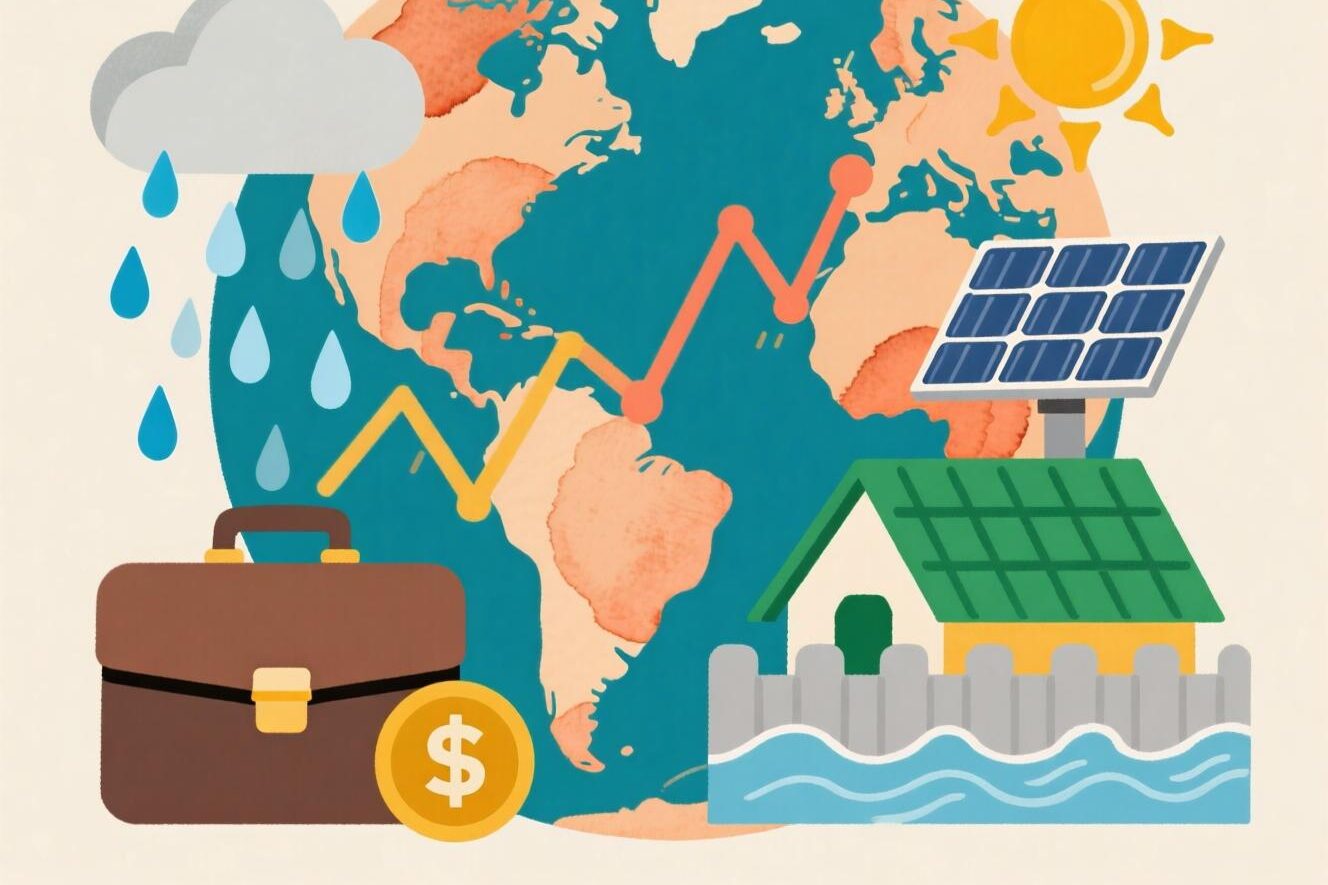
Understanding Climate Adaptation Insurance
As climate change accelerates, extreme weather events such as floods, wildfires, hurricanes, and droughts are becoming more frequent and severe. Traditional insurance models are struggling to keep pace with rising risks, leaving communities, businesses, and governments exposed to massive financial losses. In response, climate adaptation insurance has emerged as a strategic financial tool designed not only to cover climate-related damages but also to support proactive resilience efforts. This type of insurance goes beyond compensation—it incentivizes investments in adaptation and reduces long-term economic vulnerability.
The Growing Cost of Climate Inaction
The financial toll of climate change is no longer theoretical. Billions of dollars are lost annually due to weather-related disasters, with insured losses reaching record highs in recent years. Rebuilding after disasters is far more expensive than preparing for them. For example, every dollar spent on disaster resilience can save up to six dollars in future recovery costs, according to studies by the Global Commission on Adaptation. Climate adaptation insurance helps close the protection gap by providing financial resources before, during, and after climate events, reducing reliance on public aid and emergency borrowing.
How Climate Adaptation Insurance Works
Unlike standard property or casualty insurance, climate adaptation insurance is structured to support both risk transfer and risk reduction. Policies may include coverage for infrastructure upgrades, such as flood barriers, fire-resistant building materials, or drought-tolerant agriculture systems. Some models incorporate parametric triggers—predefined conditions like wind speed, rainfall levels, or temperature thresholds—that automatically release funds when a climate event occurs. This ensures rapid payouts, enabling faster recovery and minimizing business interruption.
Encouraging Proactive Investment in Resilience
One of the strongest financial arguments for climate adaptation insurance is its ability to drive preventative action. Insurers can offer lower premiums or bonuses to policyholders who implement adaptation measures, such as elevating homes in flood zones, reinforcing roofs against high winds, or installing early warning systems. By linking coverage terms to resilience efforts, insurers shift the focus from reactive payouts to long-term risk mitigation. This not only reduces claims but also strengthens community and economic stability.
Supporting Vulnerable and Underserved Communities
Climate change disproportionately affects low-income and marginalized populations, who often lack access to insurance and recovery resources. Climate adaptation insurance can be designed with inclusive models, such as public-private partnerships or government-subsidized programs, to ensure broader coverage. Microinsurance products tailored for smallholder farmers, informal settlements, or small businesses can provide affordable protection and promote financial inclusion. These solutions help build resilience at the grassroots level, reducing long-term socioeconomic disparities.
Attracting Investment and Enhancing Creditworthiness
For governments and municipalities, having climate adaptation insurance can improve credit ratings and attract investment. Lenders and investors view insured infrastructure and disaster preparedness plans as signs of fiscal responsibility. Insured cities are more likely to secure financing for climate-resilient projects, such as green urban development or water management systems. In this way, climate adaptation insurance becomes a financial enabler—transforming risk management into a catalyst for sustainable development.
The Role of Reinsurance and Catastrophe Bonds
Given the scale of climate risks, no single insurer can bear the burden alone. Reinsurance markets and catastrophe bonds (cat bonds) play a critical role in spreading risk across global capital markets. These financial instruments transfer a portion of climate risk to institutional investors, freeing up capacity for insurers to offer more affordable policies. Parametric cat bonds, in particular, have been used successfully in countries vulnerable to hurricanes and earthquakes, and they are now being adapted for climate-related perils.
Integrating Climate Data and Predictive Modeling
Modern climate adaptation insurance relies on advanced climate science and predictive analytics. Insurers use climate models, satellite data, and historical loss patterns to assess future risks and price policies accurately. This data-driven approach allows for dynamic pricing, scenario planning, and targeted risk reduction recommendations. Transparent risk communication also helps policyholders understand their exposure and take meaningful action to reduce it.
Policy Support and Global Initiatives
Governments and international organizations are increasingly recognizing the value of climate adaptation insurance. Initiatives like the InsuResilience Global Partnership and the African Risk Capacity support vulnerable countries in developing insurance programs for climate shocks. National adaptation plans are beginning to include insurance as a core component of climate finance strategies, aligning with the goals of the Paris Agreement and the United Nations Sustainable Development Goals.
Conclusion: A Smart Financial Strategy for a Changing Climate
Climate adaptation insurance is not just a safety net—it is a smart financial strategy for managing the economic realities of a warming planet. By combining risk transfer with resilience investment, it reduces long-term costs, protects livelihoods, and promotes sustainable development. For insurers, governments, businesses, and individuals, adopting climate adaptation insurance is a proactive step toward financial stability in an era of increasing climate uncertainty. As the world adapts to a new climate reality, this innovative approach will be essential for building a more secure and resilient future.